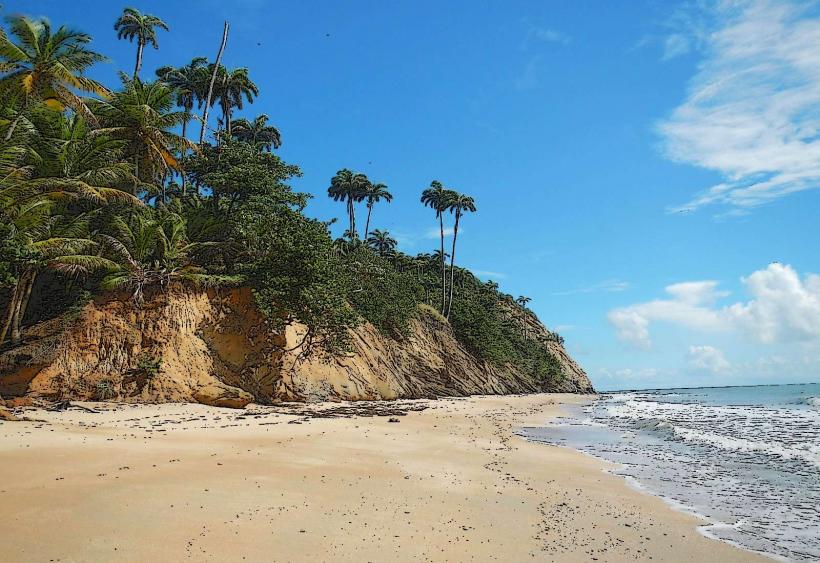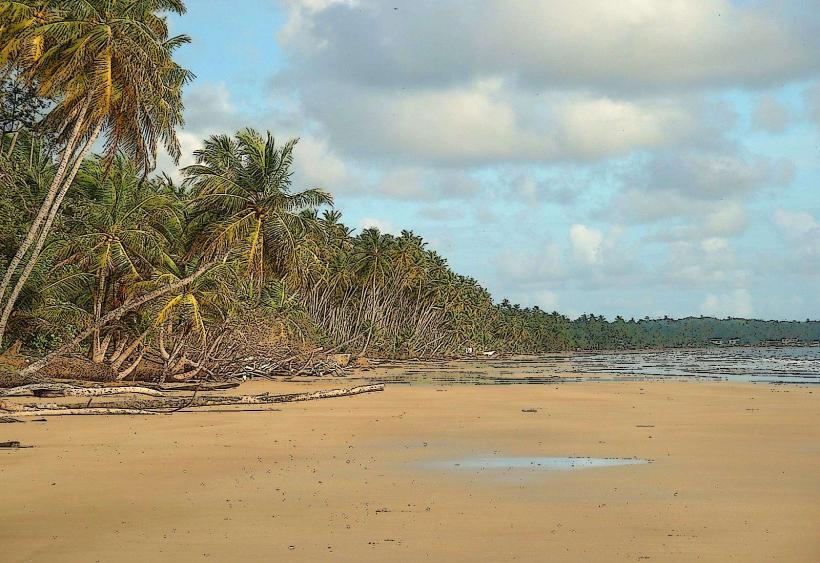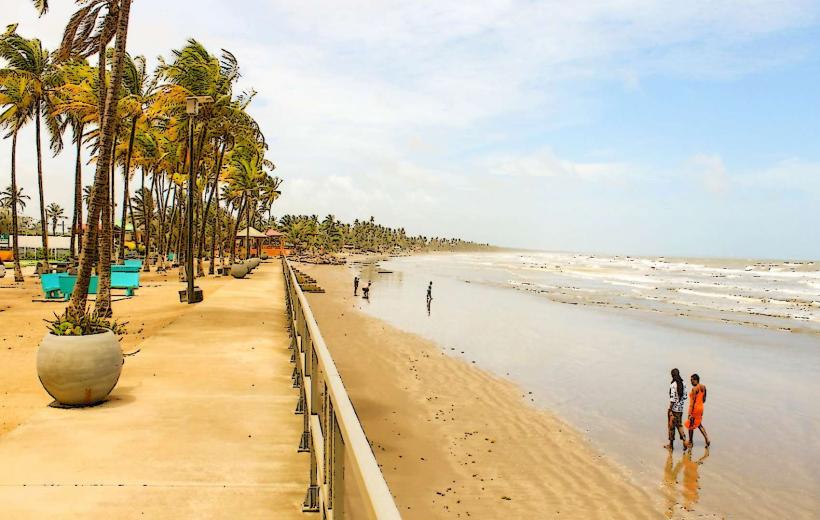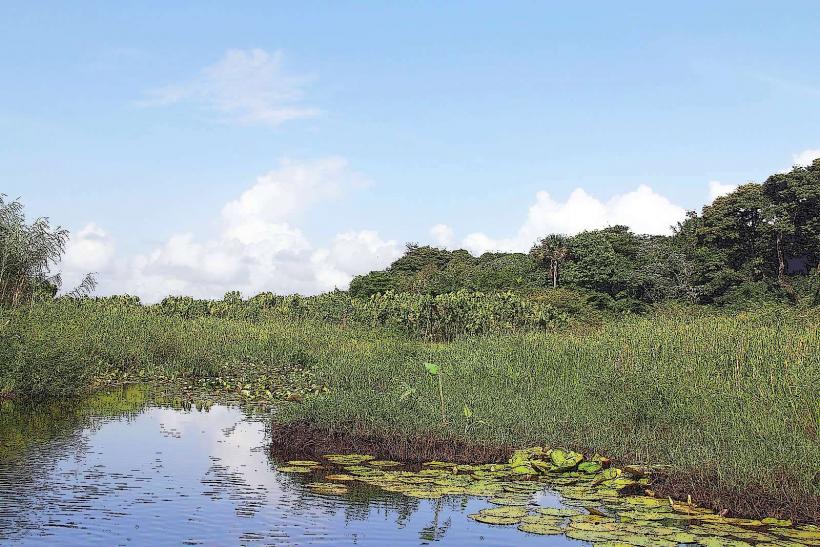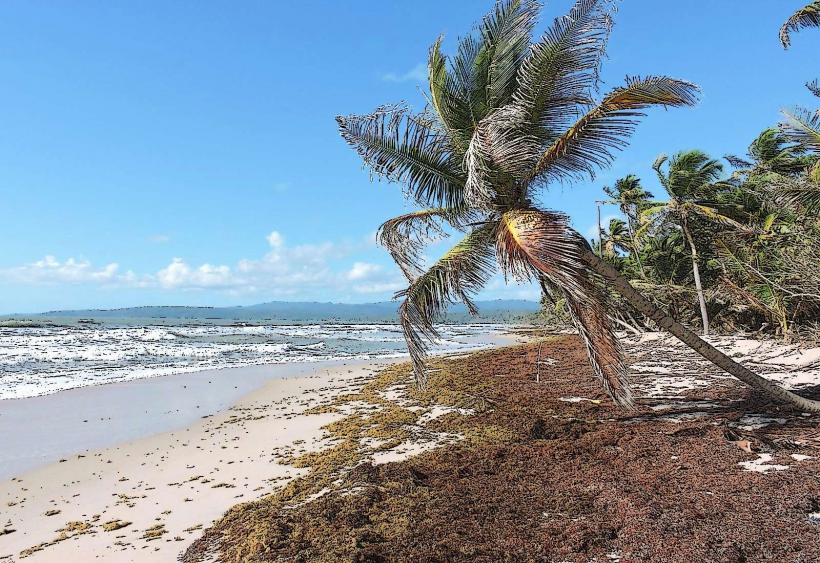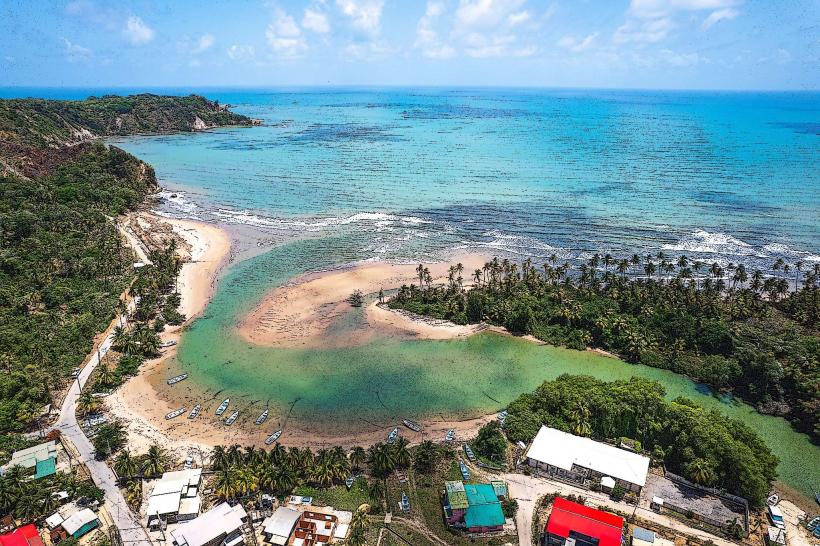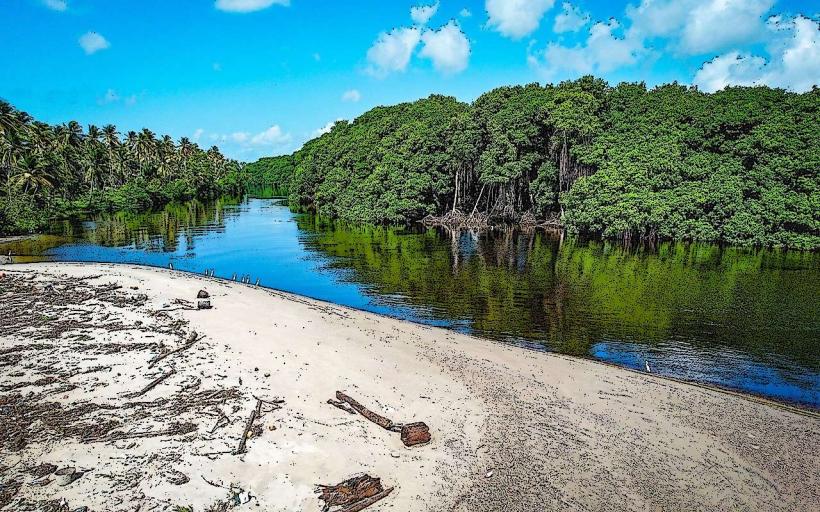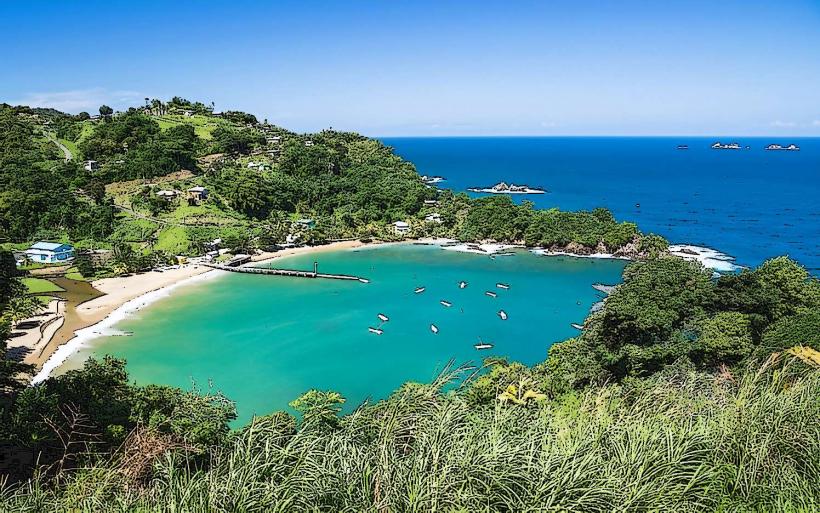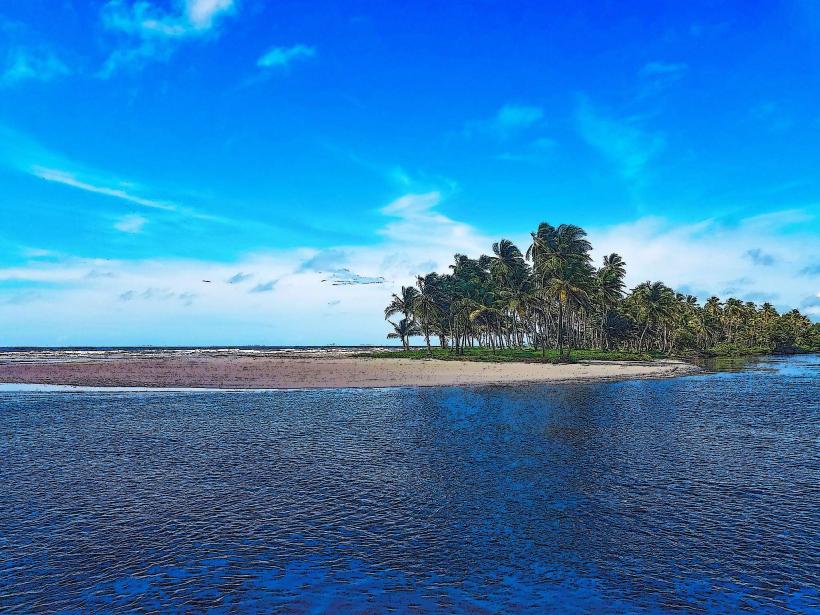Information
Landmark: Bush Bush Wildlife SanctuaryCity: Mayaro
Country: Trinidad and Tobago
Continent: North America
The Bush Bush Wildlife Sanctuary is a protected area located in the southwestern part of Trinidad, within the Nariva Swamp ecosystem. The sanctuary plays a significant role in preserving the island’s rich biodiversity and providing a safe haven for a variety of species, especially those native to Trinidad and Tobago. It is an important conservation site that helps protect endangered species and provides opportunities for ecotourism, wildlife observation, and environmental education. Below is a detailed overview of the Bush Bush Wildlife Sanctuary:
1. Location and Accessibility:
- Geographic Location: Bush Bush Wildlife Sanctuary is situated within the Nariva Swamp region, specifically in the southwestern part of the swamp. The sanctuary covers an area of approximately 2,500 acres and is part of a broader wetland area that includes marshes, mangroves, and rainforests. It is located in the Mayaro district of Trinidad, not far from Manzanilla Beach and the Nariva River.
- Access: The sanctuary is accessible by road from Port of Spain (about 90 minutes by car). Visitors can take the Eastern Main Road or South Coast Road to reach the nearby town of Rio Claro, then proceed south towards Mayaro and follow signs for the sanctuary. The sanctuary is primarily a rural area and is often best explored with the assistance of a local guide or tour operator who is familiar with the terrain. A 4x4 vehicle is often recommended for traveling on the unpaved roads that lead into the sanctuary.
2. Ecological Significance:
- Biodiversity: The Bush Bush Wildlife Sanctuary is home to a diverse array of wildlife, including various species of mammals, birds, reptiles, amphibians, and insects. The sanctuary's mix of wetlands, tropical rainforest, and savanna habitats supports many unique and endangered species. Some of the most notable species include the red howler monkey, white-tailed sabrewing (a rare hummingbird), and the South American manatee (found in the nearby waters). The sanctuary provides a safe environment for these species to thrive, with limited human interference.
- Wetlands and Freshwater Ecosystem: The sanctuary is an important part of the Nariva Swamp, one of Trinidad's largest wetlands. These wetlands are crucial for maintaining the hydrological balance in the region, acting as natural water filters that absorb excess nutrients and prevent flooding. The swamp's water system supports a variety of fish species, including tilapia and catfish, and provides a habitat for both freshwater and migratory bird species.
- Mangrove and Coastal Habitats: In addition to freshwater wetlands, the sanctuary contains areas of mangrove forests along the coast. Mangroves are critical for coastal protection, as they help prevent soil erosion and provide breeding grounds for fish and other marine life. The mangrove ecosystem also supports species like the green iguana, caimans, and various bird species that rely on the coastal environment for food and shelter.
3. Wildlife and Flora:
- Mammals: The sanctuary is home to a variety of mammal species, including the red howler monkey, one of Trinidad's most iconic species. These monkeys are known for their distinctive howls and are often found in the treetops of the sanctuary’s forested areas. Other mammals in the sanctuary include the Capuchin monkey, agouti, opossum, and the nine-banded armadillo.
- Birds: Bush Bush is an excellent destination for birdwatching, with more than 200 species of birds recorded in the sanctuary. Notable species include the scarlet ibis, great egret, roseate spoonbill, yellow-crowned night heron, and the white-tailed sabrewing, a rare hummingbird. The sanctuary is especially popular among birdwatchers during the migratory season, when it hosts many migratory species passing through the region.
- Reptiles and Amphibians: The sanctuary is home to various reptiles, such as green iguanas, caimans, and snakes, including the fer-de-lance (a venomous pit viper). The wetland habitats are also ideal for amphibians like frogs and toads, which thrive in the moist conditions.
- Flora: The vegetation in the sanctuary is rich and varied, with dense tropical rainforest, marshlands, and mangrove forests. Common plant species include coconut palms, water lilies, mangroves, and orchids. The diversity of plant life provides essential shelter and food for the wildlife in the area, particularly the numerous species of birds and insects.
4. Ecotourism and Activities:
- Guided Tours: The Bush Bush Wildlife Sanctuary is best explored through guided tours, which offer a deeper understanding of the ecosystem and wildlife. Local guides lead visitors through the sanctuary's diverse habitats, including the mangrove forests, wetlands, and rainforest areas. The tours typically involve walking trails and boat rides, depending on the conditions and the specific areas being visited. These tours provide an excellent opportunity for wildlife spotting and photography, as well as learning about conservation efforts and the importance of protecting the sanctuary's biodiversity.
- Birdwatching: The sanctuary is a hotspot for birdwatching, particularly for enthusiasts looking to observe rare species in their natural habitats. Visitors can expect to see a wide range of bird species, including both native and migratory birds. Birdwatching tours are usually conducted in the early morning or late afternoon, as these are the best times for observing birds.
- Wildlife Photography: Given the sanctuary's rich biodiversity, it is a popular destination for wildlife photographers. The opportunity to capture images of rare species like the scarlet ibis, red howler monkeys, and caimans is a highlight of any visit. The lush landscapes, mangrove forests, and wetlands provide stunning backdrops for nature photography.
- Nature Walks: Visitors can enjoy nature walks in the sanctuary’s rainforests and along its trails. These walks are led by experienced guides who can explain the flora and fauna of the area. The walks often involve visits to the mangrove habitats, where visitors can see the intricate root systems and observe the variety of species that depend on the mangrove environment.
- Boat Tours: Boat tours are available to explore the sanctuary's wetland and mangrove areas. Visitors can take guided boat rides through the swamp's waterways, allowing them to see wildlife such as herons, egrets, and caimans up close. Boat tours are also an excellent way to observe the swamp's water systems and learn about the ecological importance of the wetlands.
5. Conservation and Environmental Protection:
- Protected Area Status: Bush Bush Wildlife Sanctuary is designated as a protected area under the Environmental Management Authority (EMA) of Trinidad and Tobago. It is part of the broader Nariva Swamp ecosystem, which is recognized for its ecological importance. The sanctuary is actively managed to protect its wildlife and habitat from human impact, and it is part of efforts to preserve Trinidad and Tobago’s natural heritage.
- Conservation Efforts: The sanctuary is involved in various conservation programs that focus on protecting endangered species, restoring degraded habitats, and promoting sustainable land-use practices. Local conservation organizations and government agencies collaborate on initiatives to protect the sanctuary’s biodiversity and raise awareness about environmental issues.
- Sustainable Tourism: Ecotourism is a key component of the sanctuary's management, as it provides a sustainable source of income for the local communities while promoting conservation efforts. Tour operators and guides work closely with conservation organizations to ensure that tourism activities are carried out in a way that minimizes environmental impact and supports the protection of the sanctuary's natural resources.
6. Best Time to Visit:
- Dry Season (December to May): The best time to visit Bush Bush Wildlife Sanctuary is during the dry season, from December to May. This is when the weather is more favorable for outdoor activities like wildlife viewing, birdwatching, and hiking. The trails are more accessible, and boat tours are easier to navigate.
- Rainy Season (June to November): The rainy season, which runs from June to November, can bring heavy rainfall and may cause some areas of the sanctuary to be flooded. However, the rainy season also provides a unique opportunity to see the swamp in its full wetland glory and observe migratory birds that frequent the area during this time.
7. How to Get There:
- By Car: From Port of Spain, take the Eastern Main Road or South Coast Road toward Rio Claro and Mayaro. From there, follow signs to the sanctuary. Visitors may need to drive through rural areas and travel along unpaved roads, so a 4x4 vehicle is recommended for easier access.
- By Public Transport: Public transportation options are limited to maxi-taxis or private hire vehicles. Once in the general area, visitors can arrange for local transportation or hire a guide to take them to the sanctuary.
Conclusion:
The Bush Bush Wildlife Sanctuary offers a unique and immersive opportunity to experience Trinidad’s rich natural heritage. With its diverse ecosystems, abundant wildlife, and commitment to conservation, the sanctuary provides a peaceful retreat for nature enthusiasts and a chance to learn about the importance of protecting wetlands and endangered species. Whether you are interested in birdwatching, wildlife photography, or simply exploring a pristine natural environment, Bush Bush is a must-visit destination for those seeking a deeper connection with Trinidad's biodiversity.

